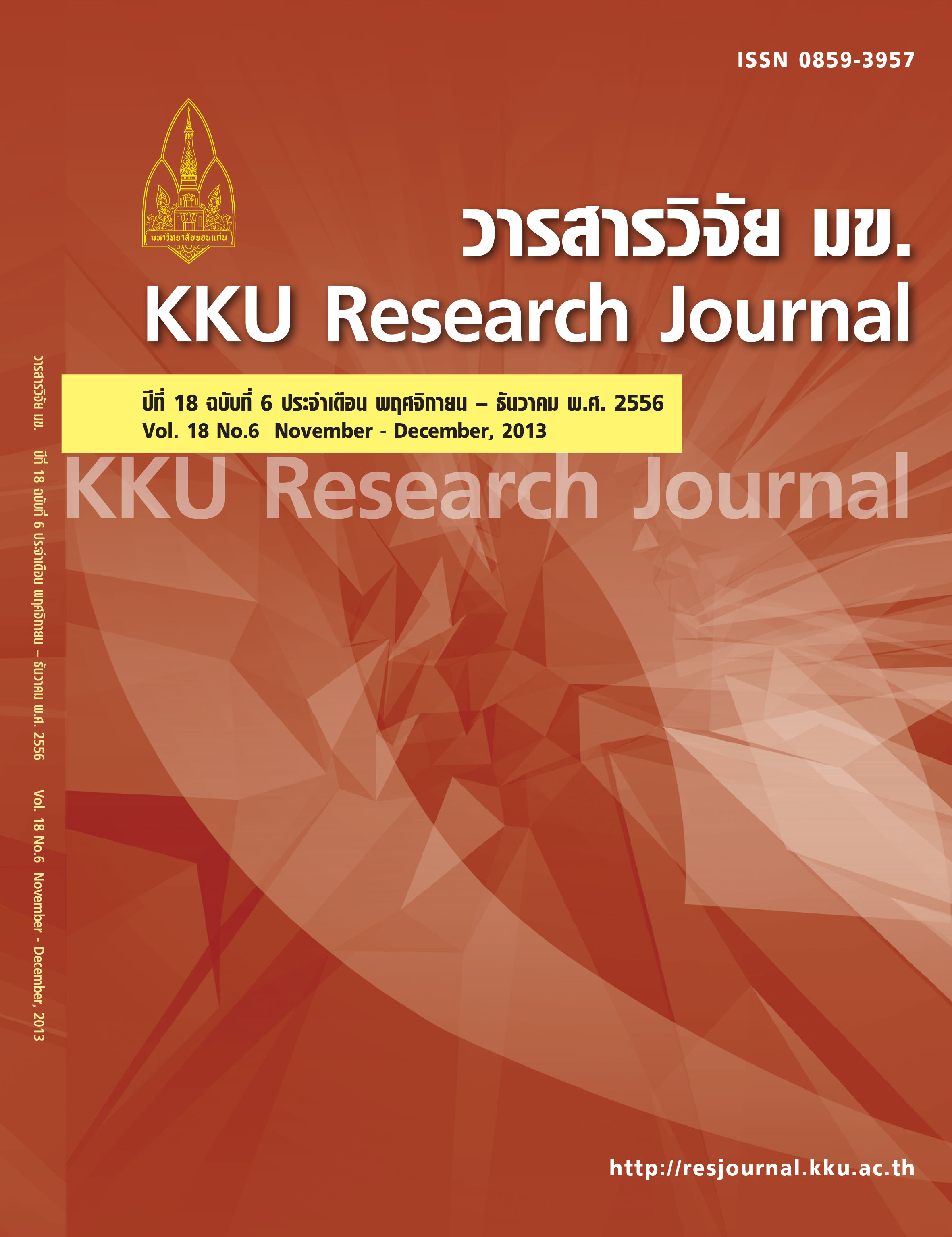Pectin from pods of Riang (Parkia timoriana (DC.) Merr.): chemical properties and jelly products
Main Article Content
Abstract
Pods of Riang (Parkia timoriana (DC.) Merr.) yielded 10.82% pulp. The pulp contained 27.86% dietary fiber, 5.49% ash, 5.04% protein and 0.77% fat (dry weight basis). Pulp of Riang pods was qualified as low methoxyl pectin with 4.13% methoxyl content. The equivalent weight of pectin was between 5300-5900 forming a good gel in lime water with or without the addition of sugar. However, the mixture did not form a gel when it was boiled. The most accepted Riang jelly by panelists was formulated with pulp, water, sugar, and lime water with the ratio of 1.5: 35: 12: 30, respectively. The jelly with the addition of 0.15% citric acid resulted in precipitation of Riang pulp and the mixture did not form a gel when the citric acid was added ? 0.20%. The acceptance of Riang jelly increased significantly (p<0.05) when the color, flavor and citric acid were added. The jelly product with the addition of 0.10% citric acid and 0.03% strawberry flavor was the most accepted.
The colored and flavored strawberry jelly kept for 12 weeks at room temperature showed that the gel strength decreased significantly (p<0.05) when the duration of storage increased (the strength of the gel was in the range from 0.045 to 0.063 N). The total microorganisms were found < 1?104 CFU/g, yeasts and moulds < 100 CFU/g and E. coli < 3 MPN/g. The colored and flavored strawberry Riang jelly product was the moderate and much liking accepted by a hundred general consumers.
Article Details
References
(2) Smitasiri S, Chuaychuwong K, Tanthawiwong A, Khunsanong S, Srancharoenpong K, Riewluang P, et al. The miracle of veggies 108. Bangkok: Toyota Thailand Foundation; 1997. Thai.
(3) Ruangchakrpet S, Anprung, P. Production of Ocimum canum Sims. seed mucilage powder. Food. 2002;32(2): 144-53. Thai.
(4) Whisltler RL, BeMiller JN. Carbohydrate chemistry for food sciencetists. Minnesota: The American Association of Cereal Chemists, Inc; 1997.
(5) Kliemann E, de Simas KN, Amante R, Prudêncio ES, Teófilo RF, Ferreira MMC, et al. Optimisation of pectin acid extraction from passion fruit peel (Passiflora edulis flavicarpa) using response surface methodology. Int. J. Food Sci. Technol. 2009;44: 476–83.
(6) Weangkaew W. Extraction of pectin from dried pumelo peel using steam treatment. Research report. Thailand: Chemical Engineering Department: Faculty of Engineering: Srinakharinwirot University; 2006. Thai.
(7) AOAC. Offi cial Methods of Analysis. 17 th ed. Washington, D.C: The Association of offi cial analytical chemists; 2000.
(8) Ranganna S. Handbook of analysis and quality control for fruit and vegetable products. 15th ed. New Delhi: Tata McGraw Hill publishing Company Ltd; 2008.
(9) BAM. Bacteriological Analytical Manual. U.S. Department of Health & Human Services [Internet]. 2011 [updated 2011 Jul 2; cited 2011 Jul 2]. Available from: http://www.fda.gov/Food/ FoodScienceResearch/LaboratoryMethods/ ucm2006949.htm.
(10) Anprung P. The principle of sensory simulation for food analysis. 2nd ed. Bangkok: Chulalongkorn University Printing House; 2008. Thai.
(11) Rungrodnimitchai S. Novel source of pectin from young sugar palm by microwave assisted extraction. Procedia Food Sci. 2011;1: 1553-9.
(12) Singthong J, Ningsanond S, Cui SW, Goff HD. Extraction and physicochemical characterization of Krueo Ma Noy pectin. Food Hydrocolloid. 2005;19: 719-801.
(13) Ministry of Industry. OTOP Standard. Soft jelly. OTOP Standard 519/2004; 2004. Thai.
(14) Saehor S, Vattanakrisda N, Taiyanto P. Thumthanaruk B. Development of vegetable carrageenan jellies. Agricultural Sci. J. 2011;42(2) Suppl: 509-12. Thai.


